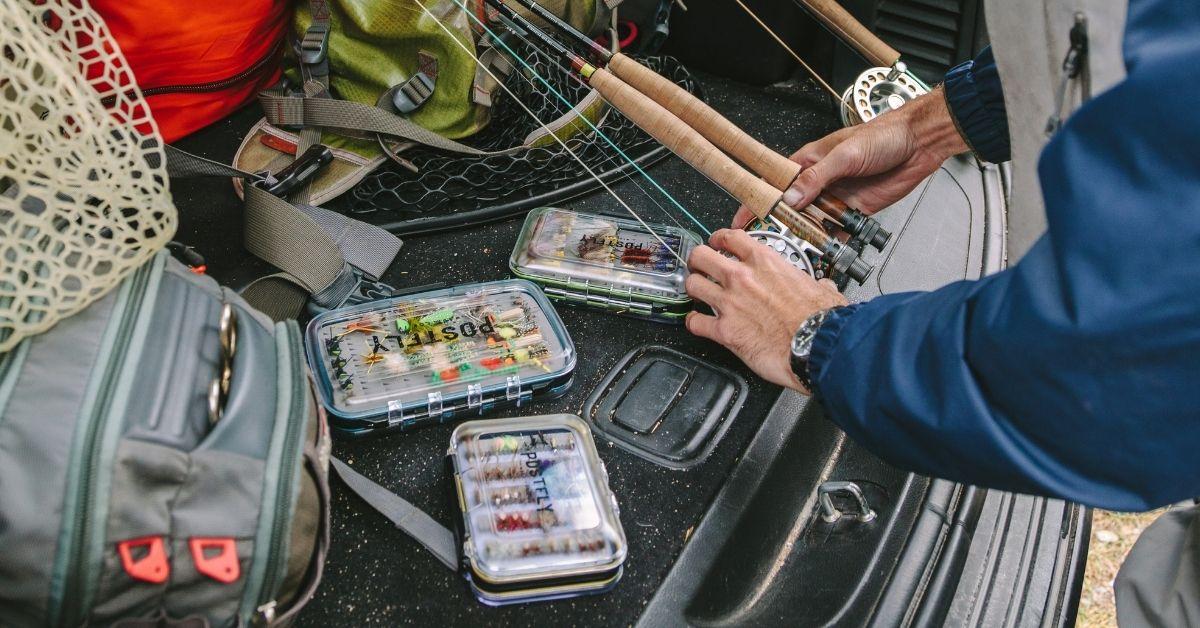Fly Fishing For Beginners: What Gear Anglers Need To Know
By: Zack Lazzari
Gear and bass anglers can expand their arsenal of skills by learning to fly fish. Fly anglers also can benefit by making the switch to gear, utilizing each approach effectively when the situation calls for a change. I often walk beaches in Baja-Mexico with both a fly and spin rod because the gear rod can make more noise and cast farther while the fly rod will coax weary fish into eating when they are grazing the beaches. Each approach has merits and we can all benefit from a more robust set of techniques on the water, regardless of the target species and environment.
Understand the Advantage
Rainbow Trout are among the most popular species of fish that fly anglers target
Gear anglers have a distinct advantage over raw beginners on the fly. They already know how to read water and have a genuine understanding of fish behavior. They know when to fish, where to fish, and how the fish will react to different colors, retrieves, and types of lures and baits. More importantly, they can tie knots and when combined, this knowledge base means the gear angler is ready to jump into fly fishing immediately after a casting lesson.
Start with the Cast
Postfly Box simplifies the shopping experience with curated boxes filled with all the necessary fly fishing gear
Casting is the biggest immediate hurdle in fly fishing. Gear anglers have muscle memory embedded into their cast that uses a slow backwards motion followed by a quick pitch or forward cast. The lure carries a weightless line and all the force is applied on the forward cast. In fly fishing, the line is weighted and the backcast is equally important. Learning to apply force on both the back and forward motion will accelerate the learning curve. Gear anglers must focus on casting the rod in a smooth manner that generates line speed because throwing the line forward without the backcast will result in a flopped cast.
Focus on Matching the Naturals
Wade Fishing Rods are high-performing, affordable, and a great entry point for anglers getting into the sport of fly fishing
Fly fishing has plenty of attractor-style imitations that resemble lures but the sport is often tightly focused around matching the natural insects and baitfish eaten by the target species. Trout are especially notorious for selective feeding habits and new fly anglers should study the insects and learn how fish react to different hatches. Fly selection is a critical factor and understanding the differences between dry flies, nymphs and streamers will quickly open the door to endless fly options.
Post Fly Box, the original monthly fly fishing box, features premium flies, tying gear, instruction, and more! It's the easiest way for new anglers to get into the sport of fly fishing
Presentations and Line Control
Shallow, swift-moving streams, rivers, and creeks are examples of where fly fishing might outproduce conventional equipment
After the cast is developed and a basic understanding of fly choices is learned, putting those flies into action is the final step. Learning to control the line requires some practice. Stripping line, mending, shooting line through the guides while casting and throwing slack into a presentation are all essential movements. Dead drift, swing and active retrieve presentations are also core skills. These take some time to master and new fly anglers can still catch plenty of fish while learning to perfect each presentation style.
Gear Anglers will ultimately need to practice patience while learning the basics but they have the ability to quickly adapt existing knowledge to the pursuit of fly fishing. Fly fishing is addicting and it won’t take long to get hooked on the sport.
Updated October 21st, 2021 at 4:37 AM CT


